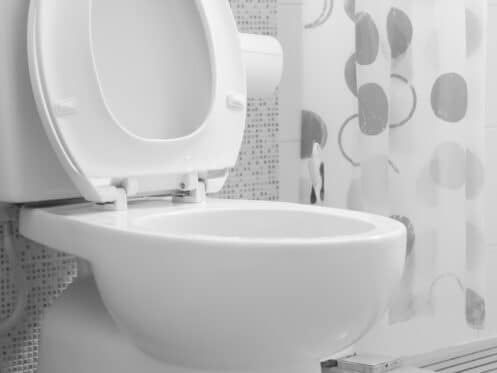When all is well with the toilets in your Lubbock, TX, home, all of the waste and wastewater that you flush should find its way to the municipal sewer system. However, when toilets move on their mountings, constantly run, or emit strange sewer odors, you could soon have a mess on your floors. Not only can leaky toilets cause serious property damage, but they also create smelly, unsanitary conditions. Read on to discover five common reasons why toilets leak when flushed.
1. Damaged Flappers
Toilet bowls should always be filled with water. This prevents staining and minimizes bacteria. When they’re flushed, new water enters via toilet tanks after toilet flappers have lifted.
Toilet flappers are small plastic or rubber components that alternately block and allow fresh water in. If toilet flappers crack or develop other wear-related issues, water flows nonstop. Plumbers often refer to flapper-related leaks as silent leaks.
By some estimates, small, silent toilet leaks can waste up to 30 gallons of water per day. Larger silent leaks may waste as much as 6 gallons of water every hour. While they’re unproblematic for your flooring and generally inconspicuous, these leaks could cost you a substantial amount of money over time.
One of the best ways to identify silent toilet leaks and other lurking plumbing problems is by scheduling annual whole-house plumbing inspections. These visits allow our team to find hidden sources of water waste and fix fixture and pipe leaks before they spiral out of control. In between annual plumbing inspections, schedule toilet repairs if water flows into your toilets’ bowls long after you’ve flushed them.
2. Your Toilet’s Water Supply Line Is Broken
Toilets are serviced by closed water supply lines. Closed systems prevent the ingress of air and keep water from seeping out when it isn’t needed. Unfortunately, water supply lines aren’t impervious to damage. Normal, age-related wear can cause these pipes to crack or develop loose connections. Your toilet’s water supply line may be especially susceptible to cracking if your home has excessively hard water and lacks a water-softening system.
The good news is that a cracked water supply line will only deposit fresh, potable water on your floor. Even when servicing toilets, water supply lines should never carry harmful, pathogenic organisms.
While you shouldn’t attempt to fix this issue on your own, you can troubleshoot what’s going on. Simply close the toilet’s water shut-off valve until your plumber arrives.
3. The Toilet Bowl or Tank Is Cracked
Cracked toilet bowls and tanks may be the result of manufacturing defects. When they are, these problems are usually covered by manufacturer warranties. However, there are also several ways in which residents can crack their toilet bowls inadvertently. The most obvious of these is striking toilets with heavy or fast-moving items. For instance, if you’re working in your bathroom and knock over a heavy ladder or tool, the resulting impact could cause fractures.
Toilets also crack due to sudden temperature changes. Porcelain is normally cool to the touch, and water that enters porcelain or porcelain-coated toilet bowls is cold as well. Attempting to scour your toilet by first filling it with piping-hot water will cause rapid expansion and contraction and stress-related damage. Simply combining the wrong cleaners in your toilet bowl can cause powerful chemical reactions that generate considerable amounts of heat.
When temperature-related cracks form, they’re usually preceded by loud cracking sounds. However, not all toilet cracks are as conspicuous. You might notice light beads of moisture or “sweating” in the affected area or have pooling water nearby. Unfortunately, unlike cracked water supply lines, cracked toilet bowls don’t just deposit clean, potable water on your floors. Cracked bowls can leak human waste and saturate your flooring with dangerous, disease-causing germs.
Similar, age-related cracks can also develop in toilet tanks. This may be the case if you’re constantly finding large pools of water around your toilet’s base after flushing or if your toilet’s tank is always covered in heavy condensation.
4. Loose or Faulty Connections
As with all plumbing fixtures, toilets have a variety of connections. If any of these connections grow loose over time, your commodes will leak. Sometimes, buildups of sediment and silt weigh supply lines and toilet components down until their watertight seals weaken.
5. Faulty Toilet Floats
Just as their name implies, toilet floats are situated on top of the water in toilet tanks. These simple, low-cost components stop the flow of water into tanks by monitoring fill levels. If your toilet tank is overflowing rather than leaking, your toilet float likely needs replacing.
We help homeowners in Lubbock maintain clean, high-functioning, and all-around reliable plumbing systems. We offer top-notch heating, cooling, and plumbing services. We also provide backflow testing, drain cleaning, slab leak repairs, and septic tank pumping. To schedule an appointment, get in touch with Action Air Plumbing and Septic today.



